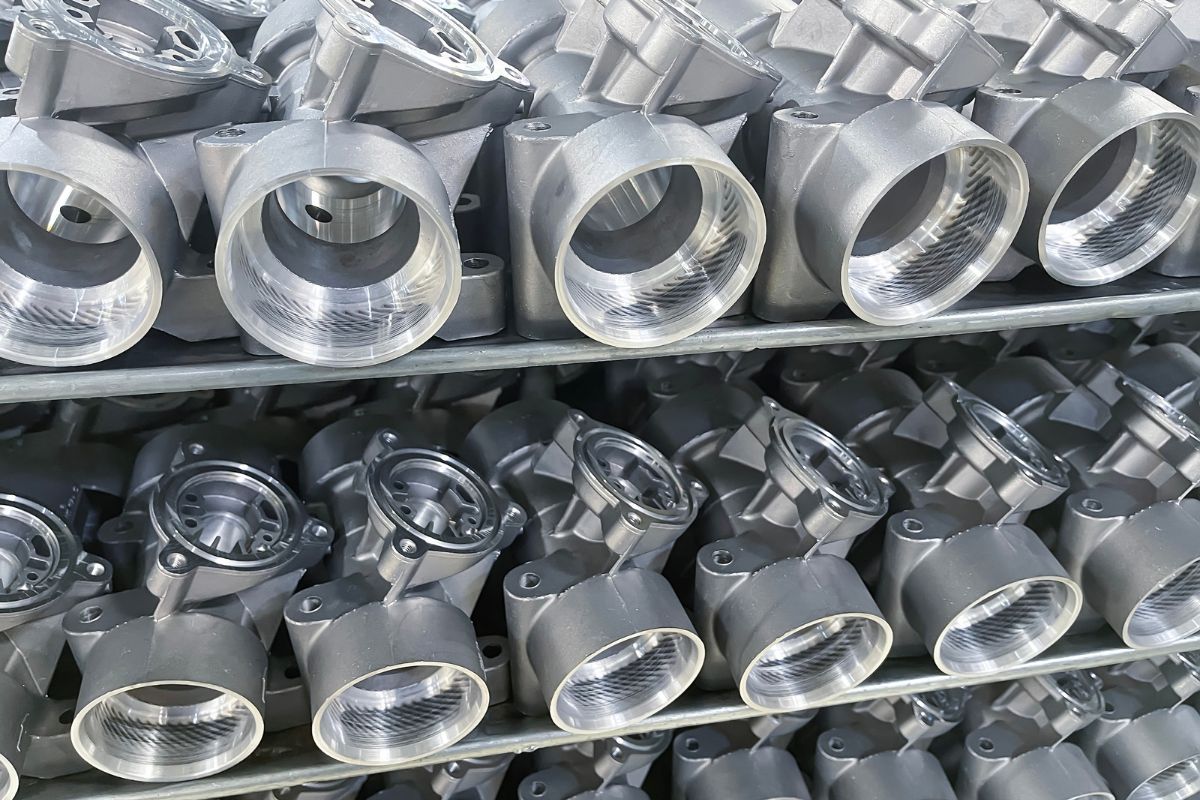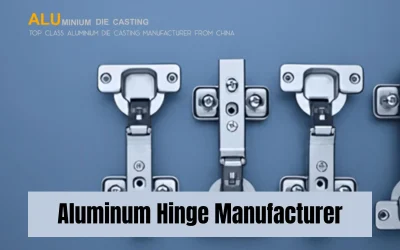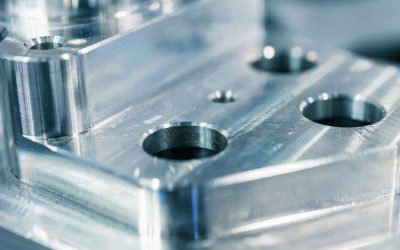A Comprehensive Overview of Aluminum Gravity Die Casting
The aluminum gravity casting process is highly advantageous because of the versatility of its applications in various industries. This versatility comes from the light weight of aluminum, which possesses many characteristics. So, they make it desirable to use it for many industrial applications. Besides this, aluminum gravity die-casting is useful for the manufacturing of various vehicle components. These vehicles may include cars, trucks, valves, compressors, tu rbines, machine tools, etc.
rbines, machine tools, etc.
So, this article will explain the aluminum gravity die-casting process by focusing on advantages, disadvantages, limitations, and major applications in industries.
How can you define aluminum gravity die-casting?
The manufacturers carry out a permanent casting process on a die. This die is typically made of steel or cast iron. Gravity is the driving force to fill up the mold with the liquid aluminum alloy in the aluminum gravity die-casting process. The aluminum gravity die-casting technique has made its mark in the modern era. The key advantage of this technique is that it reduces porosity. Additionally, it does not allow air to entrap in the mold during the casting. Consequently, the manufactured components or products will be free of faults.
Different alloys of aluminum used in aluminum Gravity Casting
Here is a list of fundamental aluminum alloys that are widely used in aluminum gravity die casting. So, let’s discuss their compositions and wide applications in different areas of life.
|
Alloy |
Composition |
Key Properties |
Typical Applications |
|
A356 |
Al-Si |
Good strength, ductility, and machinability; moderate corrosion resistance |
Engine blocks, housings, brackets |
|
A380 |
Al-Si |
Excellent fluidity, pressure tightness, moderate strength |
Engine blocks, housings, transmission components |
|
A413 |
Al-Si |
High-pressure tightness, good machinability, moderate strength |
Hydraulic cylinders, valves, pumps |
|
B390 |
Al-Cu |
Very high strength and hardness, moderate ductility |
Pistons, cylinder heads |
|
C355 |
Al-Cu |
Good strength, corrosion resistance, ductility |
Structural components, wheels, brackets |
|
AM508 |
Al-Mg |
High strength, toughness, weldability |
Aerospace components, structural parts |
|
AM6061 |
Al-Mg |
Good strength, ductility, corrosion resistance |
Building materials, extrusions, structural parts |
|
ZA8 |
Al-Zn |
High strength, dimensional stability, moderate ductility |
Die-cast components with tight tolerances |
|
K-Alloy |
Al-Si-Cu-Mg |
Exceptional corrosion resistance, high strength |
Marine applications, harsh environments |
|
Hypereutectic Al-Si |
Al-Si |
High wear resistance and hardness, moderate strength |
Engine pistons, liners |
Steps Involved in the Aluminum Gravity Die Casting Process
This process is fully automated. It helps reduce labor costs and increase product efficiency. So the CNC machines (computer numerical control machines) shape the die, and gravity pours melted aluminum into it. Besides this, the mold cavities are filled with melted aluminum, shaping it into the mold. Special algorithms on automated machines help in the creation of various innovative designs. So, they drive the demand for the aluminum gravity die-casting process. Additionally, aluminum gravity die casting doesn’t solely utilize aluminum metal. It uses aluminum alloys in its applications.
Here is a step-by-step explanation of every step involved in aluminum gravity die casting.
1. Design and Preparation
The aluminum gravity die casting starts with designing the patterns. We need to make a prototype or replica of any product. So, these patterns are usually made up of metal or wood. Besides this, these patterns consist of precise dimensions and design specifications. So, it helps make the mold highly accurate. Moreover, the die sections mainly consist of two halves. These are generally made up of steel or cast iron. One is known as a stationary mold, and the other is known as an ejector mold. These halves are allowed to fit perfectly into each other. So, it creates a cavity that replicates the pattern shapes.
2. Die Setup
Once the patterns develop, the very next step is die setup. It is highly useful to make molds or dies for the casting process. So, it is important to undergo a thorough cleaning first. It will help remove any debris or residue from previous casts. Additionally, it must guarantee that the molten aluminum will smoothly flow inside the machine. After that, the die is preheated to a particular temperature. This preheating is also useful for thermal shock. So, it will increase the metal flow. Consequently, it will increase the lifespan of the die.
3. Preparation of Molten Aluminum
The aluminum is allowed to melt inside the furnace. This process requires a temperature of around 700 °C (1292 °F). So, the furnace has enough heat to melt down the aluminum. Besides this, a few alloys are also added to increase the strength and durability of the aluminum metal parts. Additionally, degassing is also performed to remove hydrogen and other impurities from the molten aluminum. So, all these operations make the aluminum durable and also help avoid porosity. Thus, it increases the strength of finished products.
4. Casting Process
After this, the sating process starts. The molten aluminum is allowed to pour into the gravity die cavity. It is usually carried out using a carefully designed pouring basin and runner system. After that, gravity guarantees an even distribution if the metal slows in all parts of the die cavity. So, when the molten aluminum cools down, it solidifies and attains the shape of the die cavity.
5. Ejection and Post-Processing
The next step is ejection. The aluminum gravity mold opens, and the solid aluminum part comes out of it using ejector pins. Moreover, this process needs extra care to avoid any damage to the metal part.
Besides this, the post-processing comprises removing the excessive material and giving a smooth finish to the aluminum parts. So, it involves trimming and fettling. It helps remove the excessive materials, i.e., the gating system, runners, and risers. It is usually done using different machining methods. They may include sawing, grinding, or machining. Moreover, the finishing of the material part also uses heat treatments. So, it can increase the part’s mechanical properties.
6. Finishing and Coating
The final stage is finishing and coating the aluminum part. It is usually done to increase the aesthetic of cast parts. Besides this, finishing and coating both increase the durability of the metal part. appearance and durability. Multiple treatments are used to make a proactive oxide layer over the aluminum part surface. These treatments increase corrosion resistance. So, they may include painting or powder coating. These coatings give metal parts a pleasant and smooth look. But also, it increases strength.
Surface Finish Options for the Aluminum Gravity Die Casting
The finishing could be of different types. Let’s discuss these in detail.
|
Finish Type |
Process Description |
Advantages |
|
Shot Blasted Finish |
Propelling high-speed steel shots at the surface to remove imperfections and improve surface quality. |
– High rate of material removal |
|
– Uniform surface finish |
||
|
– Prepares surface for further finishing or painting |
||
|
Powder Coated Finish |
Applying dry powder electrostatically to the surface, then curing it under heat to form a hard, durable coating. |
– Environmentally friendly |
|
– Durable and long-lasting finish |
||
|
– Wide range of colors and textures available |
||
|
Anodized Finish |
Electrochemically converting the metal surface into a decorative, durable, and corrosion-resistant oxide layer. |
– Enhanced corrosion resistance |
|
– Improved aesthetic appearance |
||
|
As Machined Finish |
Using Computer Numerical Control (CNC) machines to remove material from the die-cast part to achieve the desired shape and finish. |
– High precision and repeatability |
|
– Suitable for complex geometries |
||
|
– Can achieve tight tolerances
|
What are the Benefits of Gravity Casting Aluminum
Gravity casting aluminum is in demand. It offers multiple benefits. Let’s discuss them in detail.
- High Precision and Consistency: It is used to make the parts have complex geometry. Besides this, it gives high-dimensional accuracy to gravity-cast aluminum parts. It shows consistency throughout the large production runs.
- Improved Mechanical Properties: Gravity casting aluminum helps give denser and stronger metal structures. Besides this, it improves the mechanical properties, like tensile strength and hardness of aluminum gravity-casting parts.
- Good Surface Finish: Aluminum gravity casting gives a smooth surface finish. Besides this, it decreases the need for additional post-processing and machining operations.
- Versatility in Design: It gives design flexibility to metal parts. Moreover, it is capable of dealing with complex geometries. While other methods cannot achieve them.
- Reduced Porosity: It holds the slower and more controlled pouring process. So, it can reduce gas entrapment and porosity in the final parts. Moreover, it increases the structural integrity of the metal parts.
- Economical for Large Production Runs: The cost is usually associated with the mold. So, once the mold is designed, the cost per unit decreases. So, it is quite a cost-effective solution for medium- to large-size production volumes.
- Recyclability: Aluminum has good thermal conductivity. Besides this, it melts down in the furnace. So, it can melt the used aluminum and be recycled for many other purposes.
What are the limitations of aluminum gravity casting?
Besides the benefits, aluminum gravity casting also offers some limitations. So, let’s discuss them here in detail.
- High Initial Tooling Costs: When it comes to the initial stages, it is important to note that the tooling needs enough investment. It is not economically friendly for small production volumes.
- Limited to fewer Complexities: This process is capable of dealing with complex parts. However, it offers some limitations to the complexity of the die-casting parts.
- Lower Production Rates: The aluminum gravity die-casting is significantly slower than other die-casting methods. So, it makes it less suitable for extremely high production volumes.
- Weight Limitations: This technique is suitable for small or medium-sized metal parts. As the large parts are heavier. So, their weight poses challenges for handling the quality of aluminum gravity casting parts.
Aluminum Gravity Die Casting vs. Aluminum Sand Casting
Here is the comparison between aluminum die-casting and sand casting.
|
Feature |
Aluminum Gravity Die Casting |
Aluminum Sand Casting |
|
Mold Material |
Permanent mold made of metal (typically steel or cast iron) |
Temporary mold made of sand and binder |
|
Initial Tooling Cost |
High (due to the durable metal mold) |
Low to moderate (sand molds are less expensive to produce) |
|
Lead Time |
Longer (due to the time needed to create the metal mold) |
Shorter (sand molds are quicker to prepare) |
|
Production Volume |
Economical for medium to large production runs |
Suitable for low to high production volumes |
|
Dimensional Accuracy |
Higher (tight tolerances and more consistent dimensions) |
Lower (more variability and less precise) |
|
Surface Finish |
Better (smoother finish, less post-processing required) |
Rougher (may require more machining and finishing) |
|
Mechanical Properties |
Better (denser and stronger due to controlled cooling) |
Lower (more porous structure and potential for weaker properties) |
|
Complexity of Design |
Moderate (can produce complex shapes but with some limitations) |
High (can accommodate very intricate and complex designs) |
|
Production Rate |
Slower (due to manual pouring and cooling processes) |
Faster (can use automated processes for high volumes) |
|
Defects |
Lower (less porosity and fewer defects due to controlled process) |
Higher (more prone to defects like porosity and inclusions) |
|
Material Range |
Limited (primarily used for aluminum and certain other alloys) |
Broad (can use a wide variety of metals and alloys) |
|
Recyclability |
High (aluminum and metal molds are recyclable) |
High (sand can be reused and aluminum is recyclable) |
Applications of Aluminum Gravity Die Casting
Due to its properties, aluminum gravity die casting has many applications in various industries. So, let’s discuss them all in detail.
- Automotive Industry: It has many applications in the automotive sector in making engine components (e.g., cylinder heads, engine blocks). Besides this, it helps make gearboxes, transmission cases, suspension parts, and brake components.
- Aerospace Industry: Similarly, it is used in the aerospace sector to make structural components. Besides this, it helps manufacture engine parts, housing for electronic systems, and brackets and fittings.
- Consumer Electronics: It is used to make covers for laptops and smartphones. Moreover, it also has applications for making heat sinks and components for cooling systems.
- Industrial Machinery: Similarly, aluminum gravity die casting is also used in making pump housings, valve bodies, and gearboxes. Besides this, it helps make motor housings.
- Electrical and Lighting: Aluminum gravity die-casts are widely used to make electrical appliances and lighting. They may include lighting fixtures, electrical enclosures, heat sinks for LED lights, and connectors and fittings.
Conclusion
Aluminum gravity die-casting is widely used in making metal parts. It supports complex designs and intricate geometries. So, it has many applications in different fields. They generally include high precision, a good surface finish, improved mechanical properties, and cost-effectiveness for medium- to large production runs. Additionally, it serves in different fields, i.e., automotive, aerospace, consumer electronics, and industrial machinery. So, it is a popular choice for producing high-quality aluminum components. However, it has some limitations, i.e., high initial tooling costs and slower production rates. But despite these drawbacks, aluminum gravity die-casting has many advantages, as well as providing quality metal parts.
Frequently Asked Questions
Q1. What types of aluminum alloys are generally used in gravity die casting?
Commonly used aluminum alloys are A356, A380, A413, B390, C355, AM508, AM6061, ZA8, K-Alloy, and hypereutectic Al-Si. They all have different properties. So, they are suited for different applications.
Q2. Can aluminum gravity casting be automated?
Yes, it can. Aluminum gravity die casting can be fully automated using CNC machines and special algorithms. They help shape the die and pour the molten aluminum. So, it ultimately automates the process and reduces labor costs. Thus, the overall efficiency of the process increases.
Q3. Why is reduced porosity significant in aluminum gravity casting?
Reduced porosity is quite important. Because it provides structural integrity and strength to the final product. That is why the aluminum gravity die-casting provides damage-free and suitable metal parts.






0 Comments